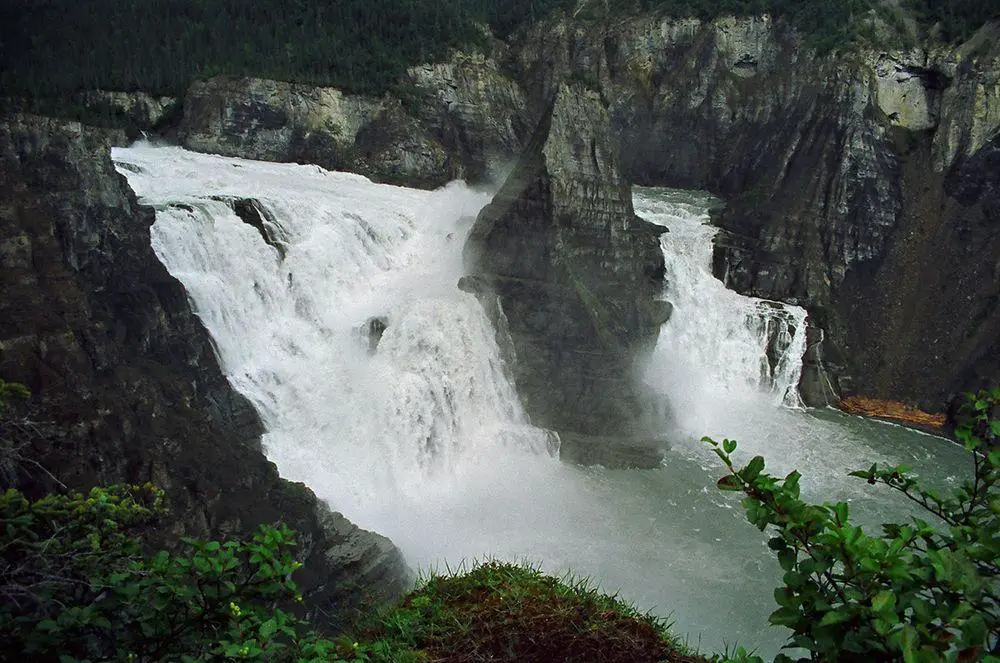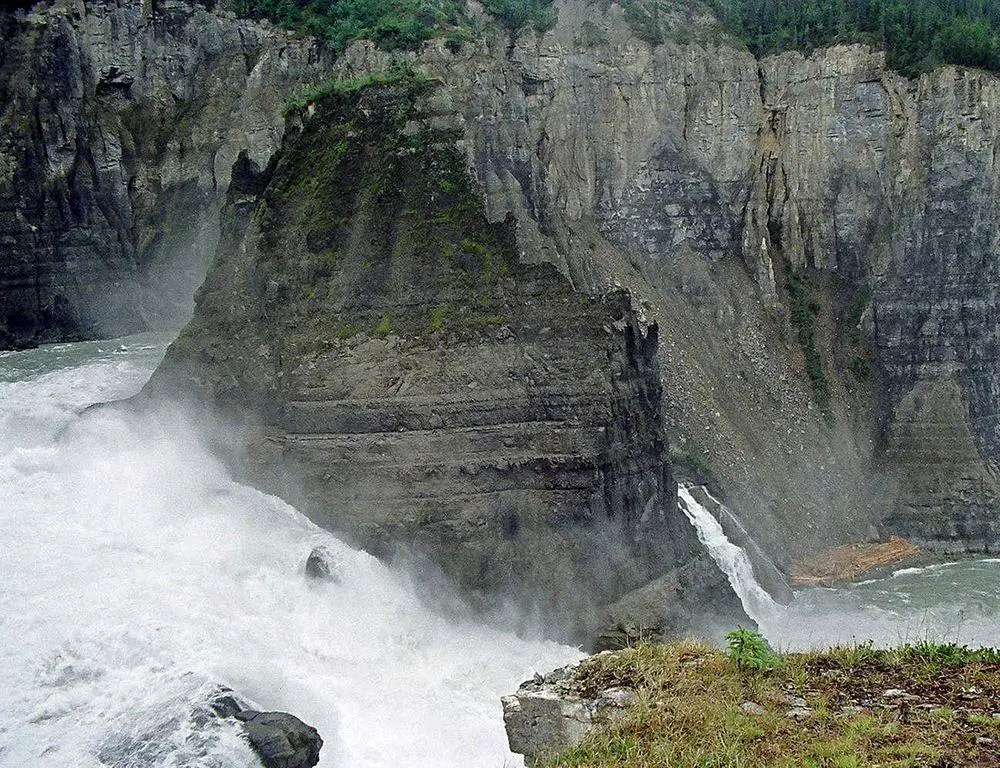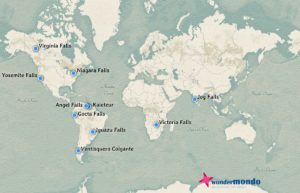World 🢖 North America 🢖 Canada 🢖 Northwest Territories
Waterfalls 🢔 Geological wonders 🢔 Categories of wonders
Wonder
Virginia Falls (Na’ili Cho)
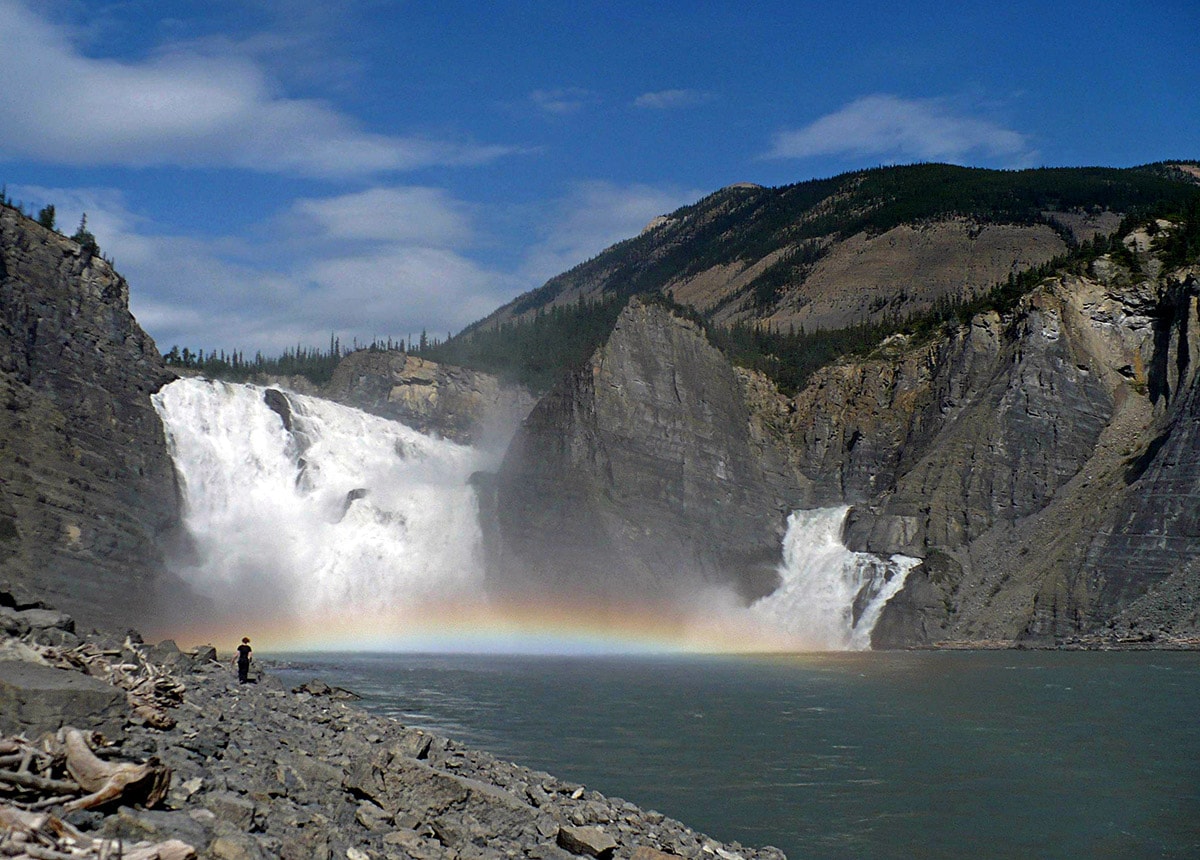
 In short
In short
Among the many wonders in the valley of South Nahanni the most magnificent are the grandiose Virginia Falls. This is one of the most powerful waterfalls on Earth.
 53.0%
53.0%
GPS coordinates
Location, address
Total height
Drops
Width
Average volume
Maximum volume
Stream
UNESCO World Heritage status
Map of the site
If you see this after your page is loaded completely, leafletJS files are missing.
 In detail
In detail
Geology
South Nahanni River has a rather unusual geological history. This is a very ancient river which was flowing here well before the mountains started to form. Thus the course of the river is typical for the river of flatlands – it is flowing with wide meanders, cutting through the mountain ridges with magnificent, deep canyons. The river cut through the slowly rising mountains like a hot wire through the wax, without changing its course.
During the latest ice ages the middle part of South Nahanni valley escaped the glaciation – while elsewhere mountains experienced the mighty flow of glaciers, the valley was unscathed by the glacier. Thus it is one of the few places in Canada which was ice-free during the last ice age.
Virginia Falls have formed in the Fourth Canyon (Painted Canyon) – the uppermost canyon of South Nahanni. It has been cut in limestone and at least part of this 8 km long canyon has been formed by Virginia Falls themselves as the falls receded upstream, leaving an almost 100 m deep rut (1).
Description
This giant waterfall is some two times taller than Niagara Falls. And, just like Niagara Falls, it is divided into two parts by a large rock. This approximately 120 m tall Mason’s Rock (unofficial name) has been named after Bill Mason (1929 – 1988), a famous filmmaker, author, and canoeist.
Upstreams the river is calm and then, in a bend, it starts… At first, the mighty stream enters impressive rapids – the Sluicebox. And then, among the cliffs is another turn to the other side and the whole stream turns into violent whitewater and disappears far, far below. The power of water pulverizes anything including trunks of trees.
The wider part of the waterfall to the south from Mason’s Rock is taller – 90 m. The northern part is narrower. At first, the northern part continues as a steep rapid, and then, after a sharp bend, it falls down some 52 meters. At the base of Mason’s Rock, both parts of South Nahanni River meet again.
The width of Virginia Falls varies at different water level, reaching up to 259 m width (2).
Thanks to this combination of the significant height of 90 m (just like approximately 25 floors tall building), the width and the huge amount of water in this northern river, as well as the wealth of good vantage points Virginia Falls belong to the most impressive waterfalls of the world.
Thanks to the constant mist around the waterfall the vegetation around it is somewhat different than elsewhere – here grow also several rare orchids.
Discovery and naming
Of course, local Dene people knew about this giant waterfall. Their given name for this fall – Na’ili Cho – means "big water falling down".
White people though love to give their own names and there is a whole story about the current official name "Virginia Falls".
First white people arrived in this area in the late 19th – early 20th century. Nahanni River was an area of legend and promise for rich gold finds. Quite mysterious events took place in Nahanni valley – headless gold prospectors were found, reviving many local legends about yeti and also about the mysterious Naha people – possible predecessors of Dene people who considered that Naha are mysterious warriors from the mountains who would attack Dene camps from time to time. Mason’s Rock to them represents one of the spirits of these Naha.
People of European descent heard from Dene about the giant waterfall. It seems, the first white people who reached the falls were Raymond Patterson and Albert Faille in 1927.
Nevertheless, the current name was given by another, later traveler. Fenley Hunter – an adventurer and businessman from New York – heard about these falls from the geologist Charles Camsell (who in turn heard about it from Dene people). Thus he decided to reach them during his surveys in this area on behalf of the Geological Survey of Canada.
On August 22, 1928, he together with his comrades George Ball and Albert Dease reached the falls and measured them. Already before he decided to name this waterfall officially. The first option was simply The Falls of Nahanni but then he changed his mind and named them Virginia Falls, after his then 16 years old daughter.
Unfortunately Virginia did not see these falls herself. When Fenley Hunter returned to the USA, he abandoned his family and embittered Virginia was not interested in the adventures of her father and his discoveries (3).
Currently Victoria falls are visited by hundreds of people every year. Almost all arrive by a chartered floatplane that lands in the river above the falls. This is a somewhat extreme and spectacular experience by itself.
There is also a proposal to rename the falls to honor Prime Minister Pierre Elliot Trudeau (father of the current prime minister Justin Trudeau) who saw the beauty of Nahanni Valley in 1972 and established a National Park here. This park was one of the first places on Earth to receive the UNESCO World Heritage status in 1978.
References
- D. C. Ford. Development of the Canyons of the South Nahanni River, N.W.T. Canadian Journal of Earth Sciences, 1973, 10(3): 366-378, 10.1139/e73-033
- Virginia Falls. World Waterfall Database. Accessed on January 1, 2017.
- Ed Struzik. Ten Rivers run through it: Adventure Stories from the Arctic. 2005. ISBN 0-9736719-4-7.
Virginia Falls are included in the following article:
 Linked articles
Linked articles
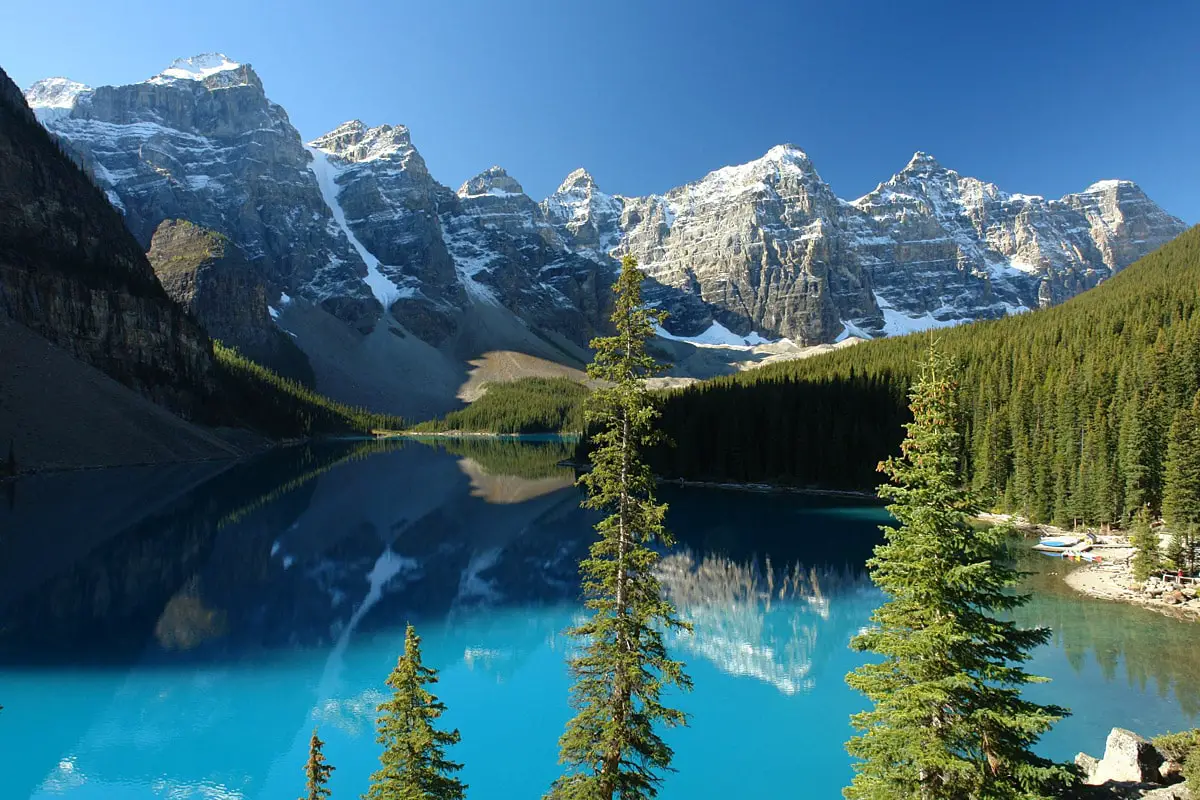
Wonders of Canada
The second largest country in the world (by size) has plenty of landmarks and wonders to offer. Most impressive are natural landmarks, especially the waterfalls, cliffs, and other landmarks in the Canadian mountains.
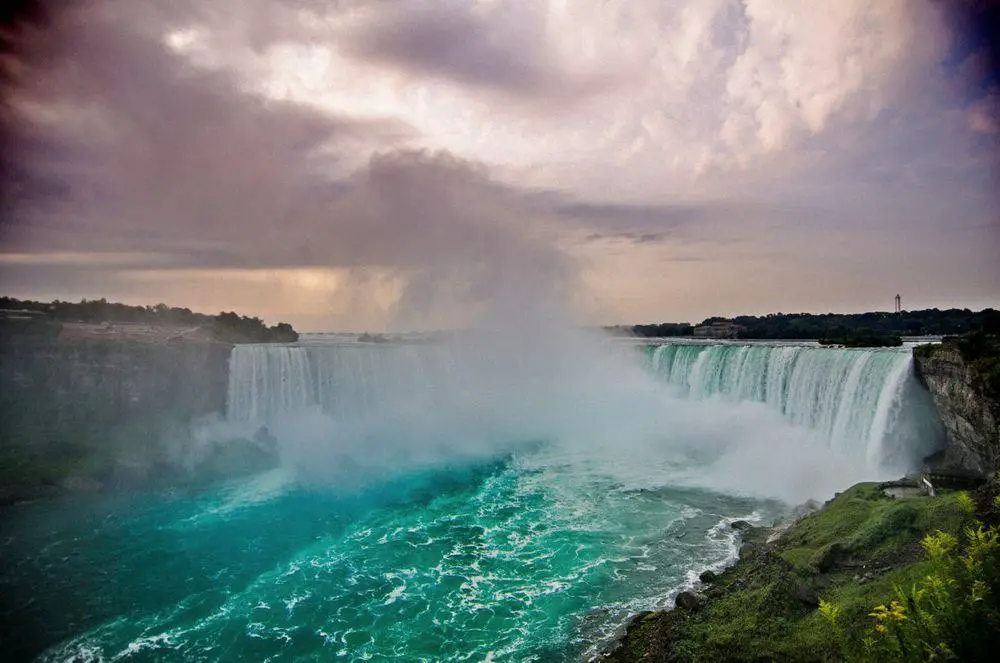
Waterfalls
Some of the most fascinating and awe-inspiring natural monuments are waterfalls or locations where a river abruptly changes its elevation.
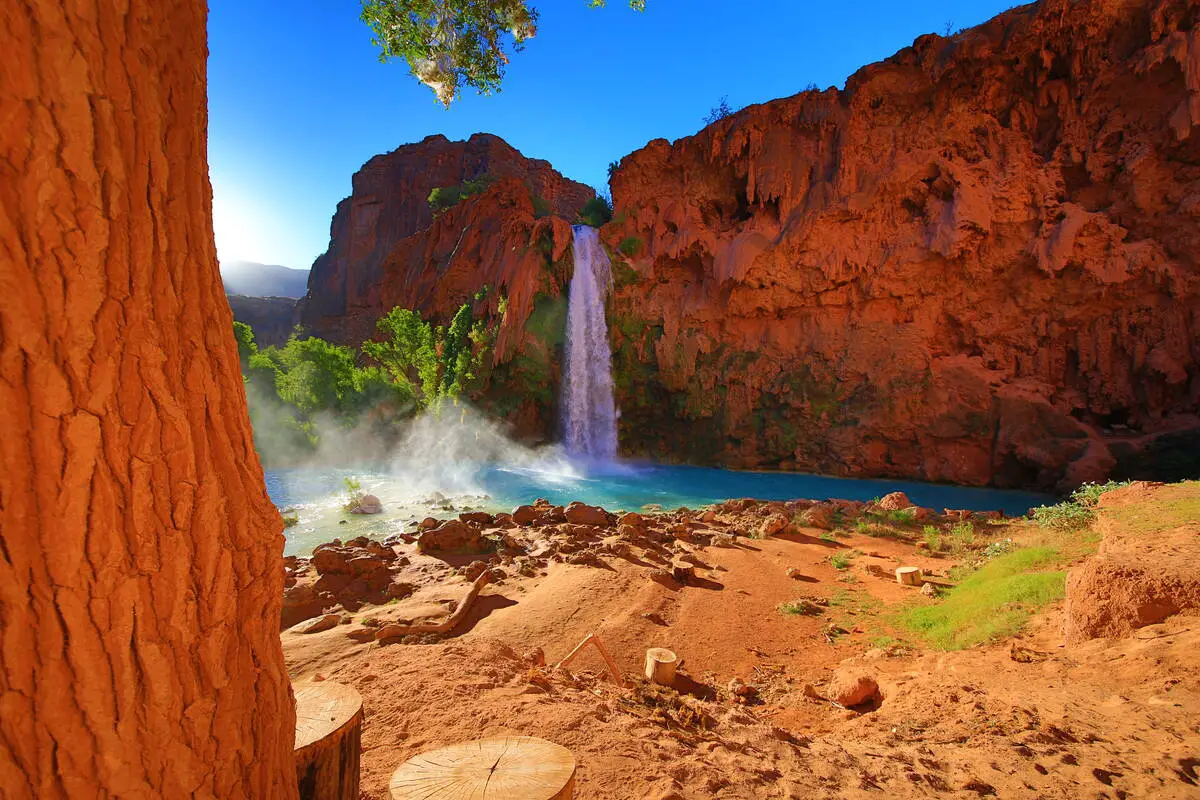
Wonders of North America
North America is a very diverse continent that extends from the northernmost land of the world to the moist tropical wilderness of Darien Gap. The most amazing wonders of North America are the prehistoric monuments of Mesoamerica, the geysers of Yellowstone, and colonial architecture.
 Recommended books
Recommended books
Nahanni Trailhead
The South Nahanni River of Canada’s Northwest Territories has captivated canoeists and mountain adventurers for decades. Imagine flying 4,000 pounds of supplies into the Nahanni River Valley with plans to build a cabin on the shores of the legendary river and live there for a year — on your honeymoon. That is what John and Joanne Moore did.
The Magnificent Nahanni: The Struggle to Protect a Wild Place
The Magnificent Nahanni extols the natural wonders of the South Nahanni Valley―its untamed waters, high, glaciated mountains, colorful tufa mounds, great falls, deep canyons, caves and karst, extensive forests, alpine tundra, and diverse wildlife, including Dall’s sheep, caribou, wolf, and grizzly bear. It is also the story of cooperative efforts to conserve the area while enabling Indigenous people to continue to hunt and fish there.

